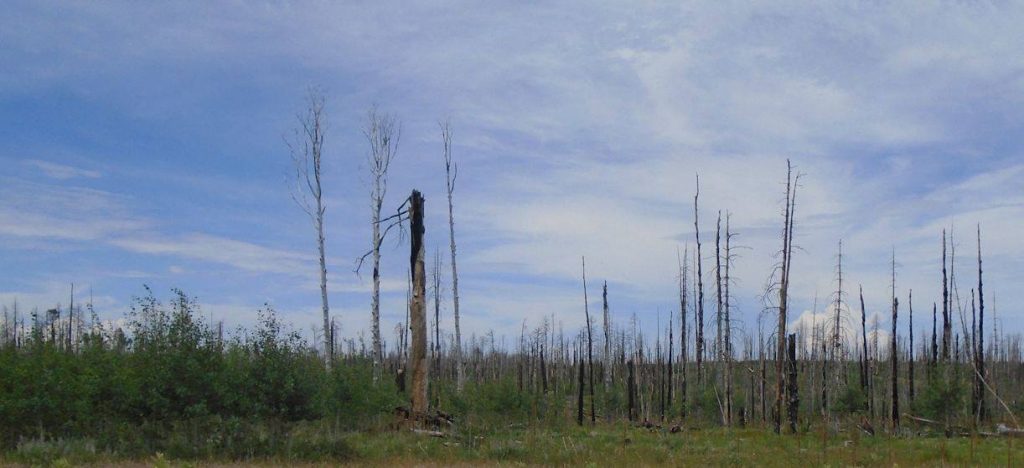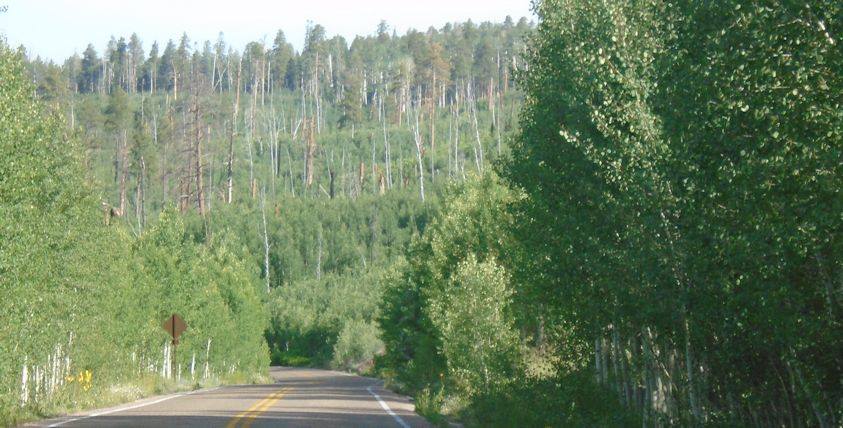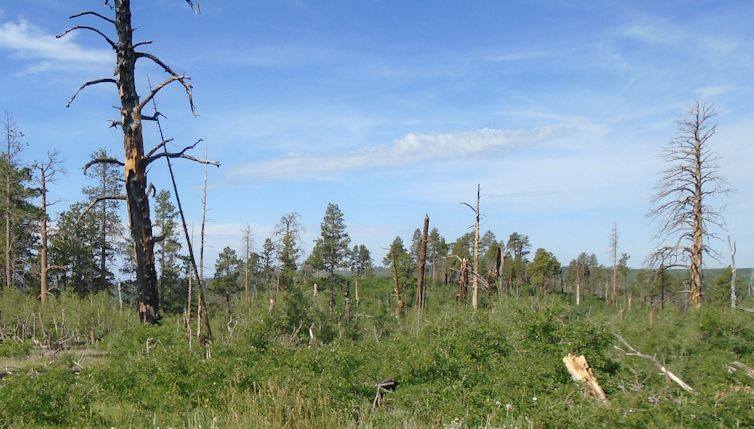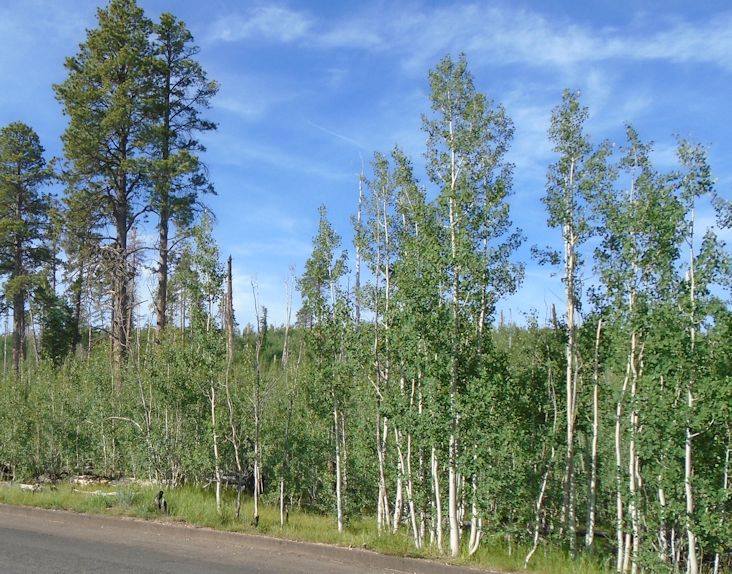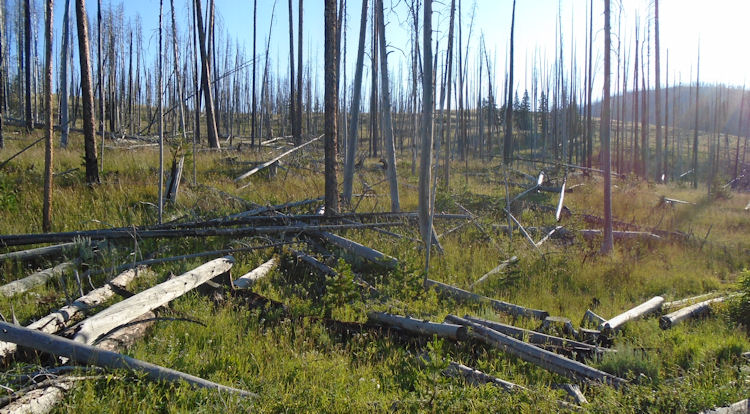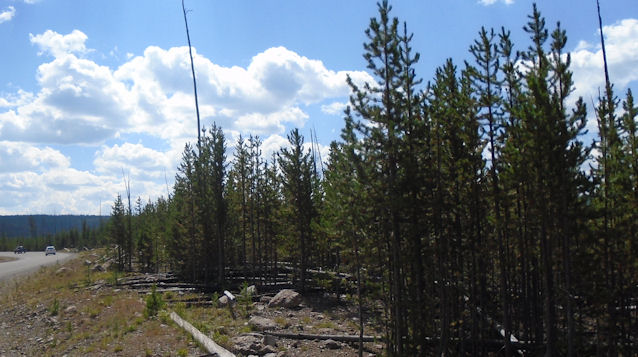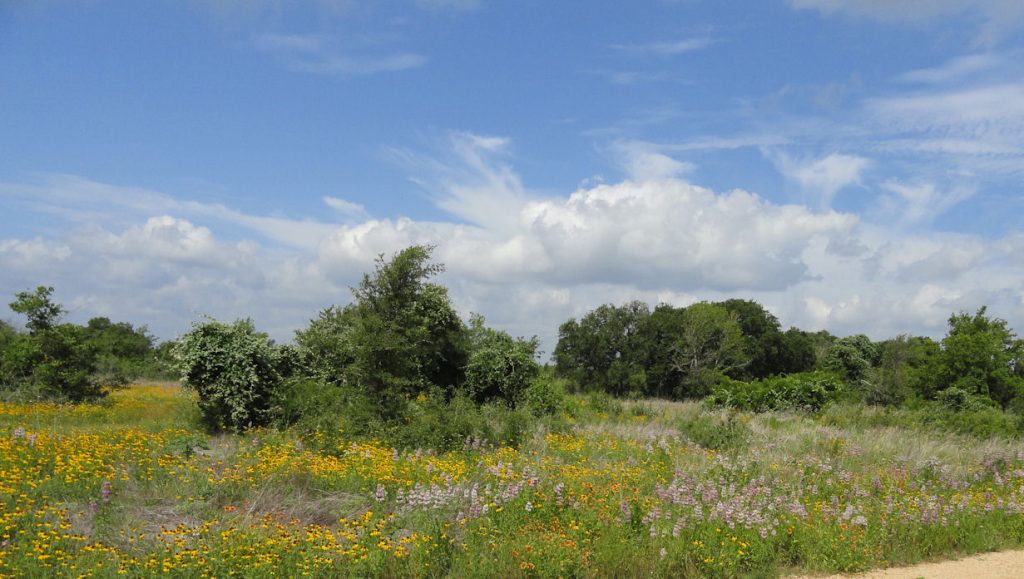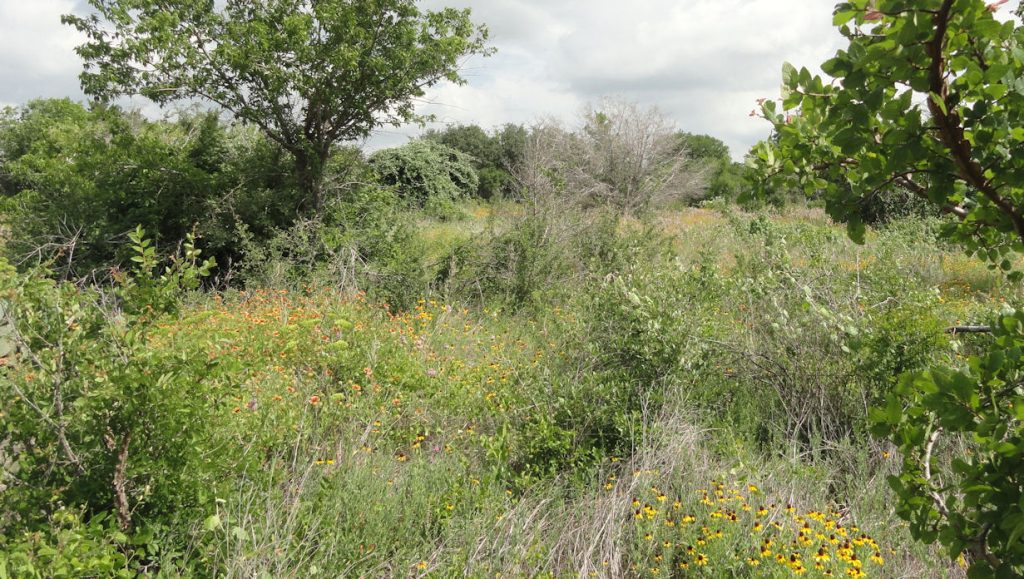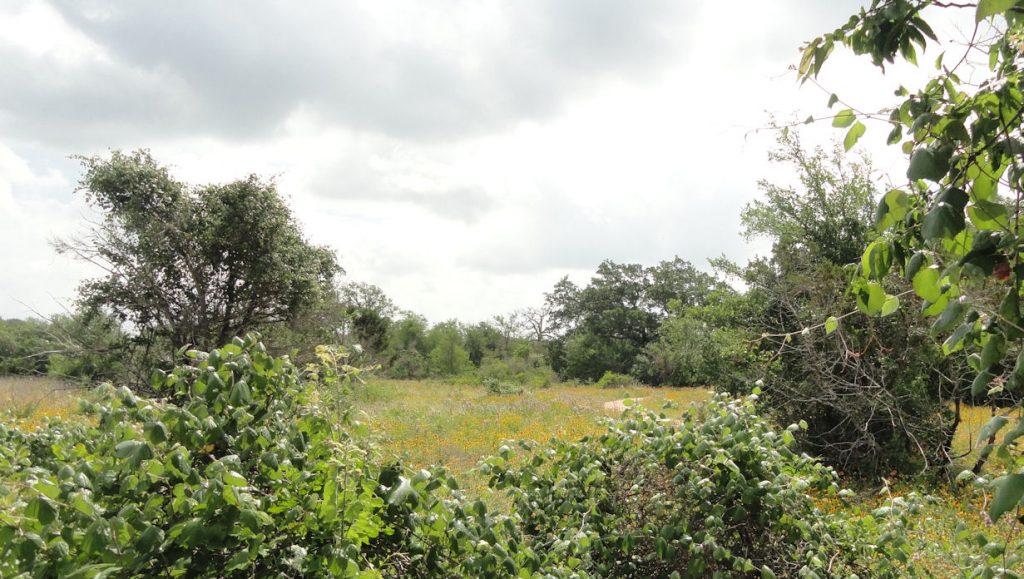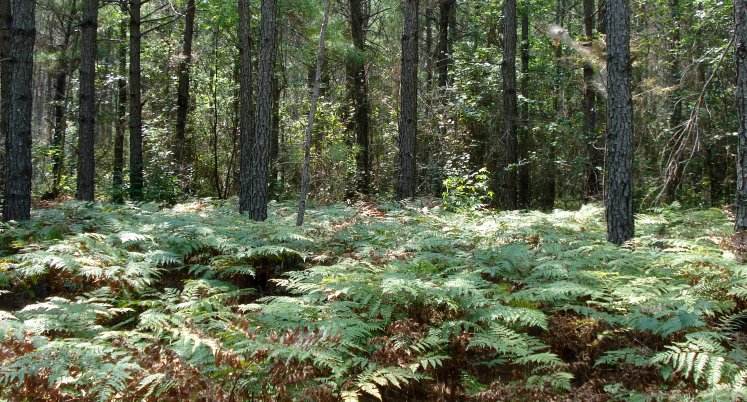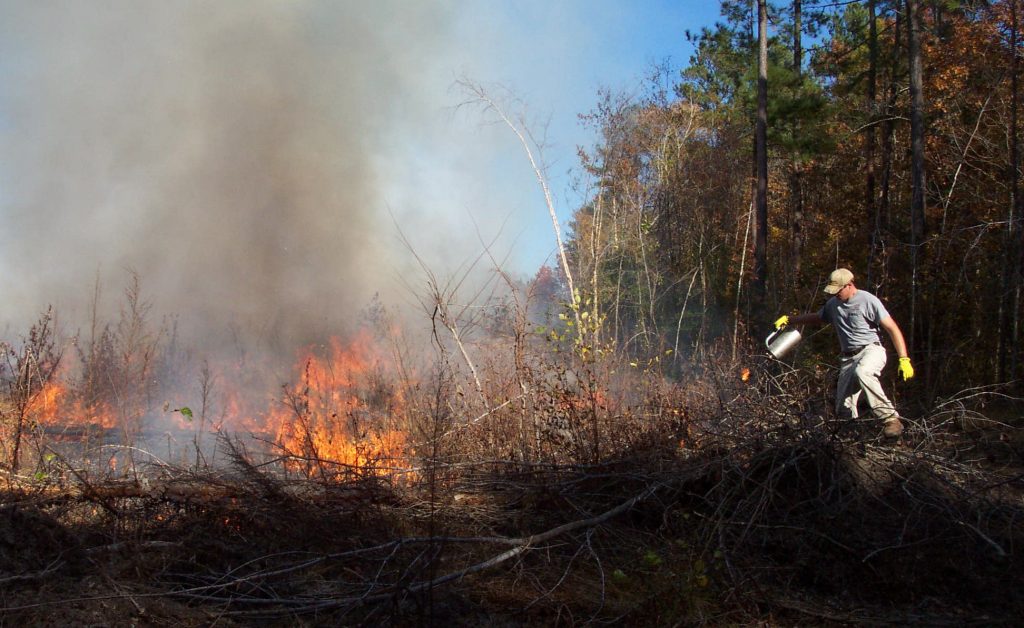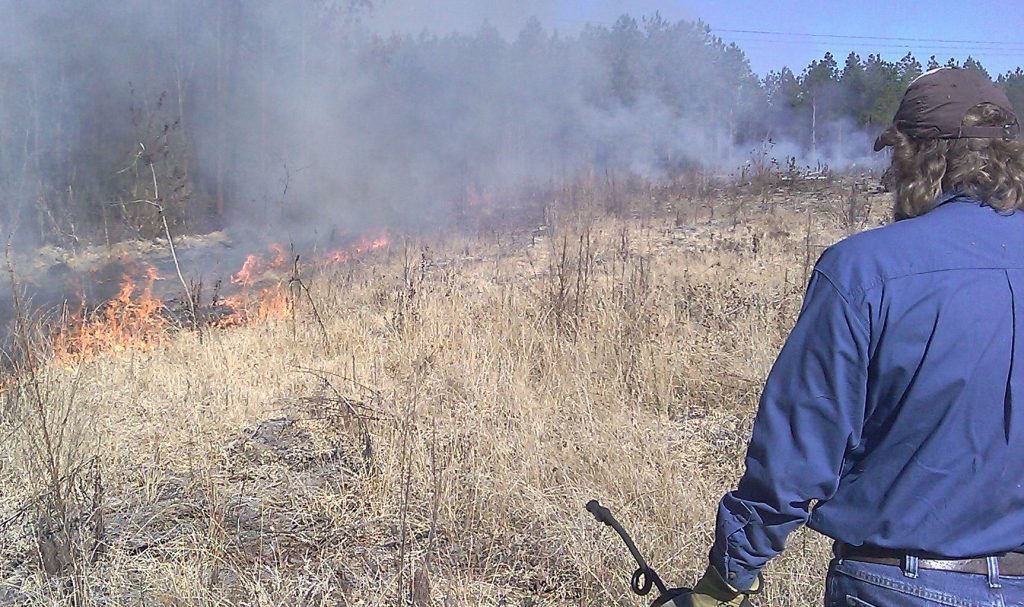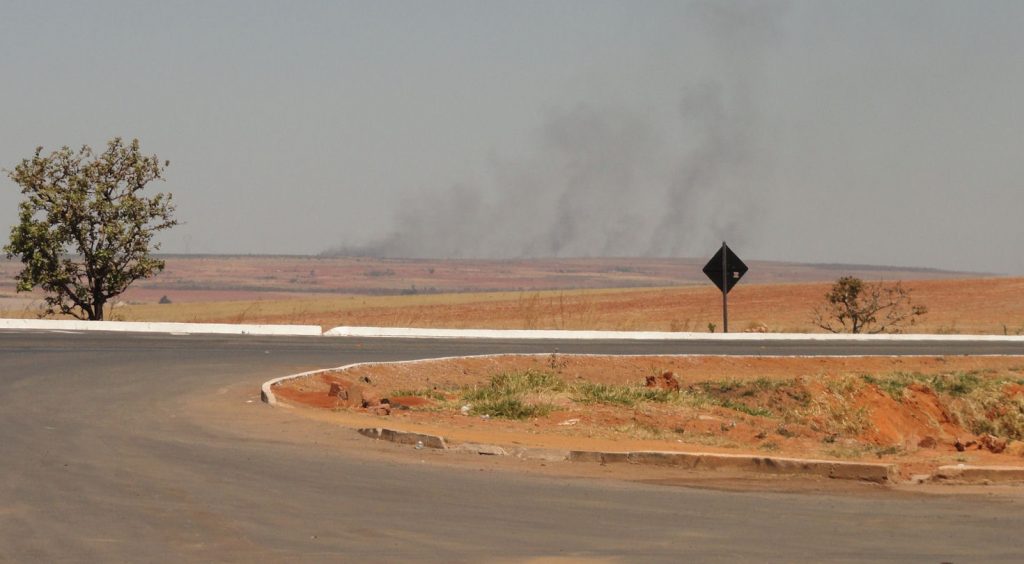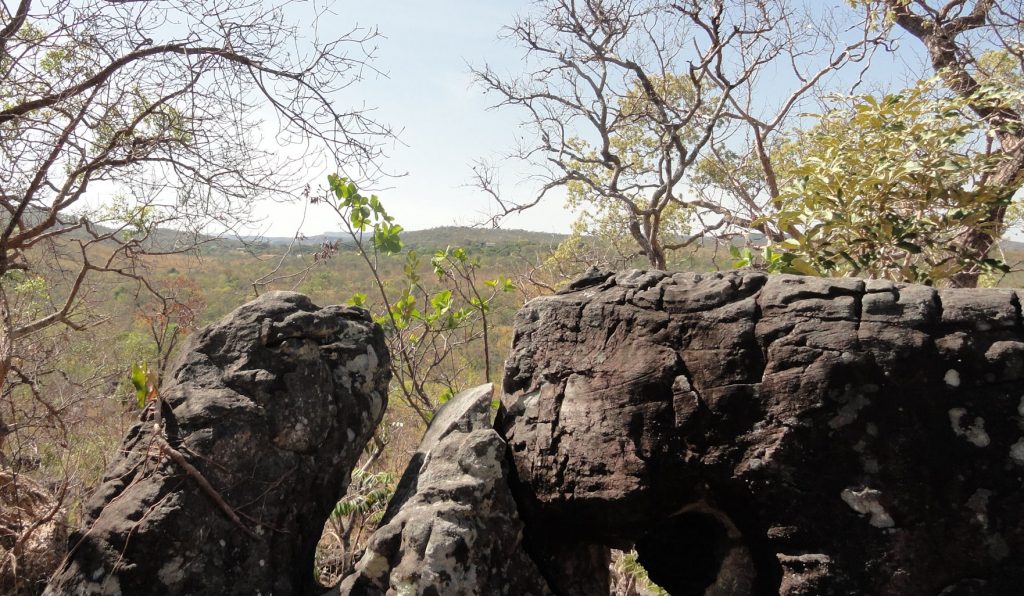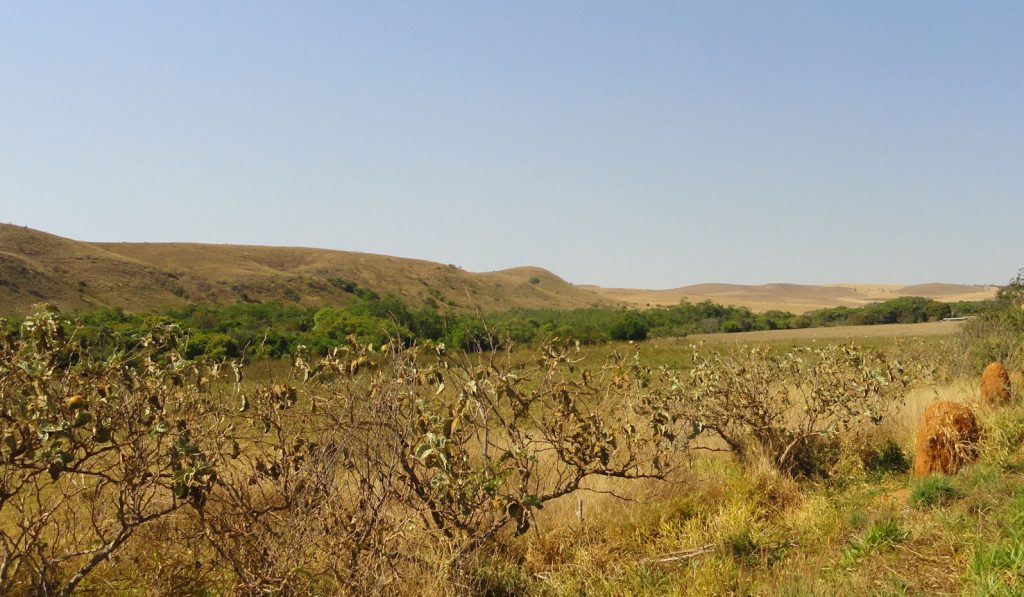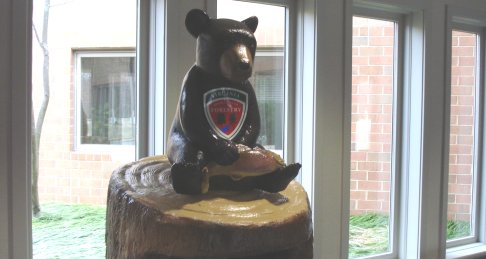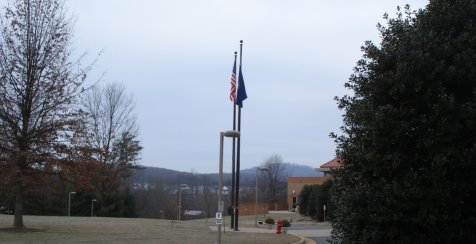I am in Charlottesville for the prescribed burning course sponsored by Virginia Department of Forestry. It has given me a lot to think about. I am entering the various threads as separate posts. (BTW – I used to come to Charlottesville to visit Mariza when she was at UVA. Now that Mariza is graduated it is the same, but different and a bit lonely.)
The Science of Forestry
When you try to change any single thing, you find it hitched to everything else in the universe.” John Muir.
Below is the view from the forestry building in Charlottesville. It was cold, but no wind, as you can see from the flags.
Forestry is probably the most scientific of all the environmental fields in that it is one of the only ones where people with boots on the ground actually do something like controlled experiments. They usually take a long time to get real results. Time is needed to let all the various small connections and causes to be manifest and many times unobvious factors are the real drivers of the process. But the time lag and complex causality usually revealed mean that forestry is usually behind the curve on the big news scares and hopes. The news media has moved along to the next crisis by the time the forest science comes in.
For example, we only recently got the word on acid rain. You remember acid rain? It was a big deal during the 1990s. It threatened to destroy many of the trees in our Eastern forests. I admit that I got a little hysterical about that prospect and there was indeed a serious problem with sulfur dioxide etc emitted by coal fired power plants. We addressed the coal/acid rain problem with a cap and trade program. It worked well enough that it is one of the great environmental success stories that we mostly have forgotten about. (BTW – the things that worry me more are invasive species. In my lifetime and those of my children, this problem will impact our forests more than global warming or acid rain or almost anything else I can think of, but that subject seems to get only local traction.)
But much of the acid rain hysteria was misdirected. There was a lot written about lakes and streams that were too acid to allow fish to survive. This was true. Acid rain, however, was not the most important cause of this. The root problem was change in land use and the ultimate irony was that acidification of lakes and streams was related to the ostensibly good factor of re-growth of forests and the prevention of forest fires. Until the early part of the 20th Century, burning was very common in Eastern forests. When burning virtually stopped, this changed and so did the chemistry of lakes within the forests.
Fires change the chemistry of the streams and lakes in the forests by changing the chemistry of what runs off the land. Everything is a trade off. The fires burn away the C and N but the remaining ash and silt that pollutes the water also raises the pH. If you stop burning the forests on the shores and/or they grow back thickly, the pH of the nearby lakes drops (i.e. they become more acidic) because the surrounding soils are naturally acidic. Burning has always been part of N American ecology and the more frequent burning has been a factor ever since humans brought fire making skills to the new world. Until recently, that is. The forests in the Eastern United States are thicker than they have been at any time since the Native Americans “immigrated” from Asia and altered the landscape with regular burning. When we talk about restoring the natural environments, BTW, we are usually talking about restoration to the pre-1607 levels, not the pre-human levels. This makes sense. It would be too hard to figure out what the “original landscape” was like, anyway. That was a couple of ice ages ago. Who knows?
Forestry, being a practical science, can analyze the problem practically and propose practical solutions. Change what you have on the land and how you manage it and you change other results. Everything is connected to everything else, often in unexpected ways. If you want to raise the pH of land or lakes, you can do that by changing land use. Controlled burning can help. Or you can apply lime. We did that when we established our wildlife plots because the soil was too (naturally) sour. You can do the same with water, at least smaller bodies.
Land use is a really important factor. In fact, it is often so big that we overlook it. I also think land use issues are a little too diverse and prosaic to attract the sustained attention of the media and the public would prefer to turn a blind eye since almost everybody is complicit in this problem. It is more fun to blame big industrialists or feckless government than to change your own habits and aspirations.
